Well, I didn't want to caveat my report...but yes, Extreme more than any component proves that digital will never be analog...even the best digital.thanks Marc, glad you’re now liking the sound but as you said “it will never be analogue”. It did help that we didn’t play poorly produced recordings from the 70/80s but surprisingly you really liked a compressed track from Fontaines D.C.
Some more changes to the system planned for September so stay tuned folks.
cheers
Blue58
Taiko Audio SGM Extreme : the Crème de la Crème
- Thread starter CKKeung
- Start date
You are using an out of date browser. It may not display this or other websites correctly.
You should upgrade or use an alternative browser.
You should upgrade or use an alternative browser.
Francisco,
Understood. I read your post and misunderstood what you were saying. I thought you were digging at the Extreme and Emile.
Again, I just misunderstood what you were saying and again apologize. All good.
Francisco,
I felt really bad that I misunderstood your post. I am sorry for attacking you. Please let me explain WHY I took your post the wrong way.
I have been using the Extreme/Roon for 2 years now. In these 2 years I have not had one glitch with Roon working properly on the Extreme. I LOVE THE EXTREME AND THE ROON EXPERIENCE. The combination has brought me closer to the music that I have loved for 60+ years as well as a plethora of new music. I also use the Extreme/Roon to make a living
I personally have auto updates on with Roon as I've never encountered any drastic issues with the updates. There was only one time in 2 years when Roon updated and the SQ suffered, BUT during that few days, I still used the Extreme/Roon to listen to music, do demos and neither I or my visitors noticed a down tick in SQ as even though the tracks didn't sound as good as they did prior to the update, they were still very listenable, well above what I need to enjoy music, which is the purpose of the Extreme/Roon for me.
SO, when I read the first line of your post that said about terrified Extreme users with each Roon update it struck a nerve with me. Re-reading the rest of your post I now realize that you were, in your way, complementing Emile. When I first read it I thought it made Emile sound like he was pressured to say this or that and then re-tract what he said.
I was reading all of this on my phone, which can be dangerous for me, so now realizing that you were totally complimenting Emile, just in a manner that this old brain did not comprehend when I initially read it.
So for the last time, I sincerely apologize and will be more careful in the future before I lay into someone. Lesson learned.
Last edited:
Absolutely no problem on my part.Francisco,
I felt really bad that I misunderstood your post. I am sorry for attacking you. Please let me explain WHY I took your post the wrong way.
I have been using the Extreme/Roon for 2 years now. In these 2 years I have not had one glitch with Roon working properly on the Extreme. I LOVE THE EXTREME AND THE ROON EXPERIENCE. The combination has brought me closer to the music that I have loved for 60+ years as well as a plethora of new music. I also use the Extreme/Roon to make a living
I personally have auto updates on with Roon as I've never encountered any drastic issues with the updates. There was only one time in 2 years when Roon updated and the SQ suffered, BUT during that few days, I still used the Extreme/Roon to listen to music, do demos and neither I or my visitors noticed a down tick in SQ as even though the tracks didn't sound as good as they did prior to the update, they were still very listenable, well above what I need to enjoy music, which is the purpose of the Extreme/Roon for me.
SO, when I read the first line of your post that said about terrified Extreme users with each Roon update it struck a nerve with me. Re-reading the rest of your post I now realize that you were, in your way, complementing Emile. When I first read it I thought it made Emile sound like he was pressured to say this or that and then re-tract what he said.
I was reading all of this on my phone, which can be dangerous for me, so now realizing that you were totally complimenting Emile, just in a manner that this old brain did not comprehend when I initially read it.
So for the last time, I sincerely apologize and will be more careful in the future before I lay into someone. Lesson learned.
Regards
Well, I didn't want to caveat my report...but yes, Extreme more than any component proves that digital will never be analog...even the best digital.
"Never"? Assuming you mean "as good or better than analog," I personally wouldn't bet on it. Digital will keep marching onward on a number of fronts that will improve audio quality, while it seems to me, analog tech, as good as it is now, has a more constrained future for advancements. (I am NOT trying to start a digital/analog debate here!)
Steve williams
Site Founder, Site Co-Owner, Administrator
"Never"? Assuming you mean "as good or better than analog," I personally wouldn't bet on it. Digital will keep marching onward on a number of fronts that will improve audio quality, while it seems to me, analog tech, as good as it is now, has a more constrained future for advancements. (I am NOT trying to start a digital/analog debate here!)
The debate will go on forever but for me alone, once I had my Extreme I went from listening to 90% vinyl to now over 90% streaming. The Extreme comes darn close IMO
Wil, all opinions from me are not to be for anyone except me. I know that's obvious, but humans are prone to make specifics from generalisations."Never"? Assuming you mean "as good or better than analog," I personally wouldn't bet on it. Digital will keep marching onward on a number of fronts that will improve audio quality, while it seems to me, analog tech, as good as it is now, has a more constrained future for advancements. (I am NOT trying to start a digital/analog debate here!)
For me, the Extreme at Barry feels to all intents and purposes a pivotal breakthru product. It literally brims over w goodness. Detail, staging and elasticity/timing just stunning. So resolving it tells me EXACTLY how inept Nick Davis was in restoring Genesis. In these regards, it resembles great analog in its ability to unlock music into the room.
But on the tonal density/saturation thing, I feel that well-sorted analog has the edge, and the really great rigs out there are still class-leading.
Of course, a guy like me with a heavily modded analog front end that doesn't exceed 50% the RRP spend on Extreme with Aqua Formula XHD...and God forbid, judging tone thru Zus lol...my opinion I guess to be taken with a salt mine.
But this is a genuinely held opinion by me, over the course of hearing digital for 37 years, owning a cdp that partially addresses this area I feel digital lacks, and reinforced playing a day's worth of vinyl: Eric Dolphy jazz original pressings and Haydn symphonies, and the comparison very fresh in my head to the strong impression Extreme has left on me on two visits totally 5-6 hours exposure.
I feel the tonal density/saturation advantage well sorted analog has is still secure, and will always be.
Just my honest, heartfelt conclusions, lest anyone feel I'm having a dig at the Extreme...far from it, I remain hugely impressed from what I've heard so far.
Last edited:
I don't hear what you're saying as a dig on the Extreme or digital tech at all. My only point is that it seems logical to me to that digital audio tech will probably continue to advance at a faster pace than analog into the future. I don't doubt that first pressings on optimized analog rigs are at their own level at present. In both digital and analog, it's still the source material that matters the most -- everything that happens between the musician and the recorded medium.
Wil, we played Youssef Dayes again yesterday, and it was a riot. I felt Miles Davis c.1972 would have looked down and smiled. Right now, playing Jonas Hellborg/Shawn Lane on my Eera cdp, and the room is rocking. Both pieces are compelling on digital, and the Extreme was hugely dynamic on Youssef. I dont ever recall digital back in the 80s being this compelling.
My take on analog v digital after nearly 40 years, 7 years of continuous bliss at home with my cdp, and auditioning bleeding edge Extreme, is that the feeling of presence, whole body energised experience, and technicolor perception of music via tonal color, is still the preserve of excellent analog more than digital, and has always been. I suspect it always will be too.
My take on analog v digital after nearly 40 years, 7 years of continuous bliss at home with my cdp, and auditioning bleeding edge Extreme, is that the feeling of presence, whole body energised experience, and technicolor perception of music via tonal color, is still the preserve of excellent analog more than digital, and has always been. I suspect it always will be too.
Last edited:
so then its only Windows OS revisions that need QC checks before installation.
This is why we use Windows LTSC:
The Long-Term Servicing Channel (LTSC) is designed for Windows 10 devices and use cases where the key requirement is that functionality and features don’t change over time. Examples include medical systems (such as those used for MRI and CAT scans), industrial process controllers, and air traffic control devices. These devices share characteristics of embedded systems: they are typically designed for a specific purpose and are developed, tested, and certified before use. They are treated as a whole system and are, therefore, commonly “upgraded” by building and validating a new system, turning off the old device, and replacing it with the new, certified device.
We designed the LTSC with these types of use cases in mind, offering the promise that we will support each LTSC release for 10 years--and that features, and functionality will not change over the course of that 10-year lifecycle.
On top of this windows updating is disabled, only we can enable it in case we need to roll out a security patch or driver update.
Thanks Emile.
I'm always keen to learn from expert listeners on what they listen for when making changes to one's system so please can you share some of the tracks you tested with some notes when you get a chance.
This has been asked several times now so I will allocate some time today to post my current reference list and what I look for.
I use a "tiered" approach when evaluating differences, starting with Redbook/cd quality recordings, moving to high res digital masters and finish off with "direct from tape transfers".
In Redbook/cd recordings I mainly focus on PRAT, dynamics, staging and reasonable density. As these are usually not as sophisticated and more "mechanical" sounding then higher resolution files I evaluate things like air, flow, naturalness, tonal beauty, shading, differentiation and saturation in later stages. Nonetheless this is an important stage as a very significant part of our music collection is only available in this format.
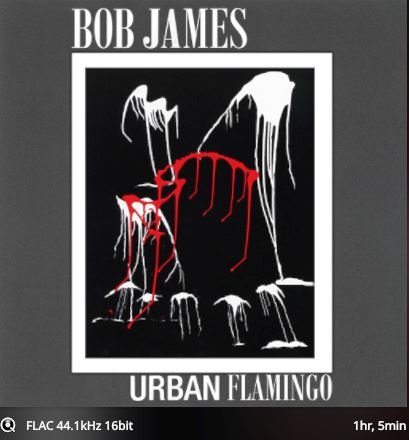
Bob James, Urban Flamingo, Track #6 Fresh Start has to be engaging and bursting with attack, it is very easy to pickup differences on this track, if rendered correctly it causes a feet tapping experience for the full 7 minutes of the track. If I find myself hitting the stop button at 2 or 3 minutes in something is wrong. Correct piano positioning and size is something to focus on in this track.
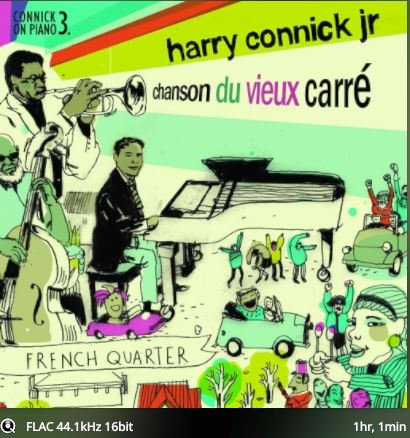
Harry Connick jr, Chanson du vieux carre, Track #8 Luscious, a bit rawer, needs to "pop" with proper bite, attack, jump factor and dynamics, looking for a degree of authenticity as far as the format allows and focus on "fun" and entertainment factor.
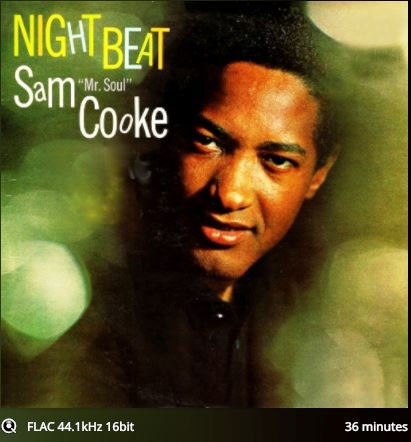
Sam Cooke, Night Beat, Track #2, Lost and lookin', suffers from a slight "digital edge" but can sound beautiful with decent differentiation and good tonal shading.
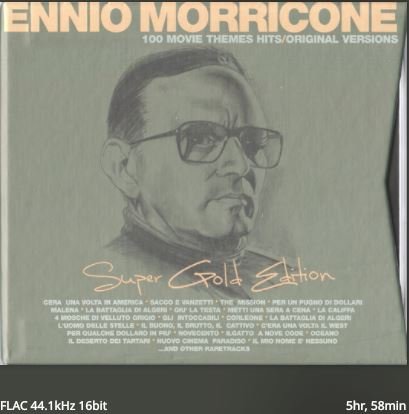
Ennio Morricone, Super Gold Edition, I do tend to go through a few spaghetti western well knowns, recording quality is not great, but it has not been "mastered to death" either. Can have surprisingly good definition and spatial rendering with some fun sound effects. Disc #2, Track #13, L'arena for example.
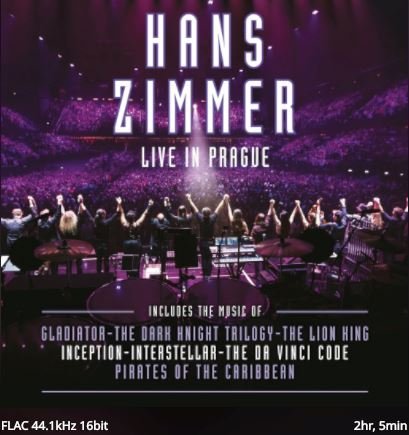
Hans Zimmer, Live in Prague. I'm a big Hans Zimmer (and movie) fan. I always try to find to match listening to the movie soundtracks to the full movie atmosphere experience. I used to include a wide range of his studio recordings in my evaluation cycle but switched to this live recording when it was released a few years ago. The tracks have a higher degree of authenticity and are more lively and thrilling then the studio versions. I happen to personally know the sound engineer designing and operating the live sound reinforcement systems. He lives about a 15 minute drive from our workshop in Hengelo and I have had the pleasure of having him over here listening to his efforts on our system. Fun fact, his home system consists of stacked Quad ESL57's, augmented with full size Pro AMT tweeters, driven by Quad II tube amplifiers. All restored/reworked to suit his personal preferences. His PA system designs all use ribbon tweeters, needless to say the Alsyvox Botticellis we were using at that time got his thumbs up. Back to listening, this contains some large orchestral pieces which build up to some very and busy scenes. There are over 200 microphones used in this recording to illustrate the complexity of this recording. What I look for is if the system can maintain a full overview as the orchestra builds and builds and if it can "climax" properly. This is a challenging task for every component in the system. There is a 24/48 version on Qobuz, and a 24/48 MQA version on Tidal, but I prefer the 16/44.1, the "higher res" versions add some detail which sounds artificial to me. I do at the very least play Disc #1, Track #6, Pirates of the Caribbean and Disc #2, Track #7 Inception, but often find myself listening to all tracks. @Mike Lavigne , these are the tracks I played when visiting you which you referred to as "torture tracks".
Moving on to high res recordings:
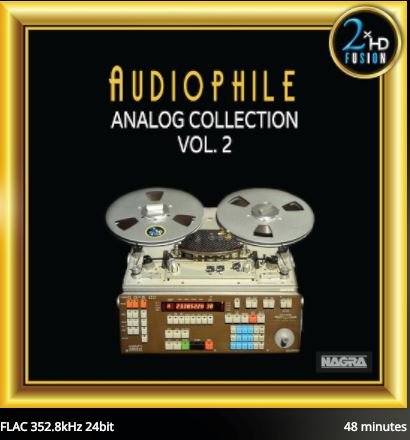
A more recent addition replacing a few others is this 2xHD Fusion album, transferred from master tape with high-end equipment. Details on the transfer process can be found online. This results in quite a different sound quality from digital (re)mastered pieces. I really like the presence, 3 dimensionality and feel of Track #6, Route 66 but all tracks are worth a listen and I usually play a few of these. This is all considerably more real and life like then the previous listed material.
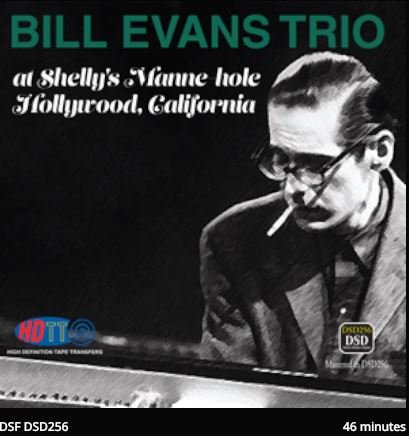
The Bill Evans Trio, At Shelly Manne hole, a 1963 recording transferred directly from tape by a process called "PureDSD", the idea here is that as DSD cannot be edited without being converted to PCM and subsequently back to DSD, you have some guarantee you are listening to the original analogue master. You can buy this from https://www.highdeftapetransfers.com/ in DSD256. This has all the noise, hiss, flutter and imperfections you'd expect from something not cleaned up to today's standards but in return you get something very pure with all original harmonics and shadings intact. This is where I start focussing on air, flow, naturalness, tonal beauty, shading, differentiation and saturation as it has this in spades. Usually simply start at Track #1 and "let her go".
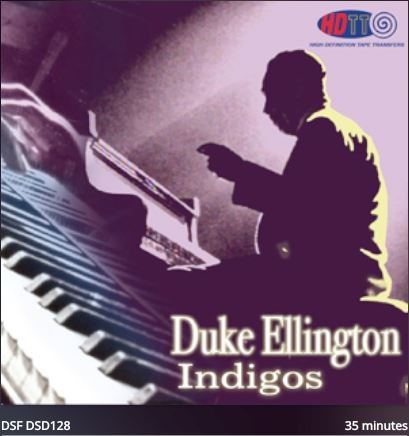
Duke Ellington, Indigos, a 1957 recording, transferred in DSD128 "PureDSD", really along the lines of the previous recording, start at Track#1 and often end up playing the whole album.
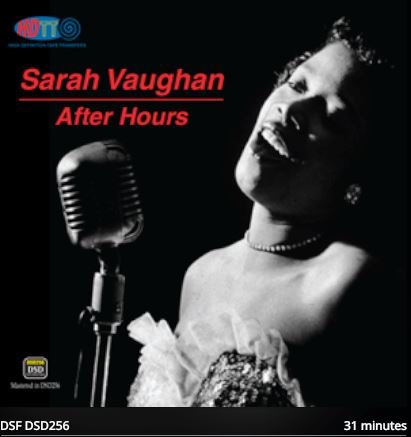
Sarah Vaughan, After Hours, another "PureDSD" in DSD256, recorded in 1961. A bit "rough" but Sarah's voice is all there with all it's intonations and shadings. All these HDTT transfers do a good job at transporting you 60-70 years back in time with the recording sounding as you'd expect it to having sounded back then. Also simply start at Track #1.
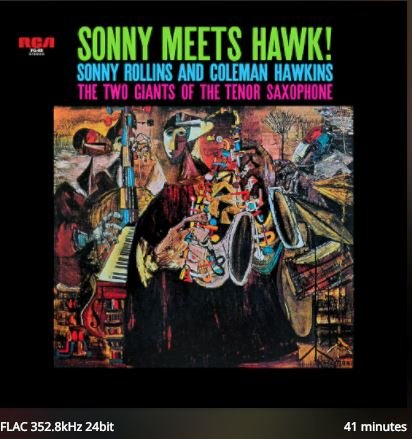
I'm going to cut it short here noticing the time. Another transfer from HDTT in 24/352.8, recorded in 1963, not PureDSD but still good with a good leading edge to the Sax, very alive, raw and a good dose of naturalness.
In Redbook/cd recordings I mainly focus on PRAT, dynamics, staging and reasonable density. As these are usually not as sophisticated and more "mechanical" sounding then higher resolution files I evaluate things like air, flow, naturalness, tonal beauty, shading, differentiation and saturation in later stages. Nonetheless this is an important stage as a very significant part of our music collection is only available in this format.

Bob James, Urban Flamingo, Track #6 Fresh Start has to be engaging and bursting with attack, it is very easy to pickup differences on this track, if rendered correctly it causes a feet tapping experience for the full 7 minutes of the track. If I find myself hitting the stop button at 2 or 3 minutes in something is wrong. Correct piano positioning and size is something to focus on in this track.

Harry Connick jr, Chanson du vieux carre, Track #8 Luscious, a bit rawer, needs to "pop" with proper bite, attack, jump factor and dynamics, looking for a degree of authenticity as far as the format allows and focus on "fun" and entertainment factor.

Sam Cooke, Night Beat, Track #2, Lost and lookin', suffers from a slight "digital edge" but can sound beautiful with decent differentiation and good tonal shading.

Ennio Morricone, Super Gold Edition, I do tend to go through a few spaghetti western well knowns, recording quality is not great, but it has not been "mastered to death" either. Can have surprisingly good definition and spatial rendering with some fun sound effects. Disc #2, Track #13, L'arena for example.

Hans Zimmer, Live in Prague. I'm a big Hans Zimmer (and movie) fan. I always try to find to match listening to the movie soundtracks to the full movie atmosphere experience. I used to include a wide range of his studio recordings in my evaluation cycle but switched to this live recording when it was released a few years ago. The tracks have a higher degree of authenticity and are more lively and thrilling then the studio versions. I happen to personally know the sound engineer designing and operating the live sound reinforcement systems. He lives about a 15 minute drive from our workshop in Hengelo and I have had the pleasure of having him over here listening to his efforts on our system. Fun fact, his home system consists of stacked Quad ESL57's, augmented with full size Pro AMT tweeters, driven by Quad II tube amplifiers. All restored/reworked to suit his personal preferences. His PA system designs all use ribbon tweeters, needless to say the Alsyvox Botticellis we were using at that time got his thumbs up. Back to listening, this contains some large orchestral pieces which build up to some very and busy scenes. There are over 200 microphones used in this recording to illustrate the complexity of this recording. What I look for is if the system can maintain a full overview as the orchestra builds and builds and if it can "climax" properly. This is a challenging task for every component in the system. There is a 24/48 version on Qobuz, and a 24/48 MQA version on Tidal, but I prefer the 16/44.1, the "higher res" versions add some detail which sounds artificial to me. I do at the very least play Disc #1, Track #6, Pirates of the Caribbean and Disc #2, Track #7 Inception, but often find myself listening to all tracks. @Mike Lavigne , these are the tracks I played when visiting you which you referred to as "torture tracks".
Moving on to high res recordings:

A more recent addition replacing a few others is this 2xHD Fusion album, transferred from master tape with high-end equipment. Details on the transfer process can be found online. This results in quite a different sound quality from digital (re)mastered pieces. I really like the presence, 3 dimensionality and feel of Track #6, Route 66 but all tracks are worth a listen and I usually play a few of these. This is all considerably more real and life like then the previous listed material.

The Bill Evans Trio, At Shelly Manne hole, a 1963 recording transferred directly from tape by a process called "PureDSD", the idea here is that as DSD cannot be edited without being converted to PCM and subsequently back to DSD, you have some guarantee you are listening to the original analogue master. You can buy this from https://www.highdeftapetransfers.com/ in DSD256. This has all the noise, hiss, flutter and imperfections you'd expect from something not cleaned up to today's standards but in return you get something very pure with all original harmonics and shadings intact. This is where I start focussing on air, flow, naturalness, tonal beauty, shading, differentiation and saturation as it has this in spades. Usually simply start at Track #1 and "let her go".

Duke Ellington, Indigos, a 1957 recording, transferred in DSD128 "PureDSD", really along the lines of the previous recording, start at Track#1 and often end up playing the whole album.

Sarah Vaughan, After Hours, another "PureDSD" in DSD256, recorded in 1961. A bit "rough" but Sarah's voice is all there with all it's intonations and shadings. All these HDTT transfers do a good job at transporting you 60-70 years back in time with the recording sounding as you'd expect it to having sounded back then. Also simply start at Track #1.

I'm going to cut it short here noticing the time. Another transfer from HDTT in 24/352.8, recorded in 1963, not PureDSD but still good with a good leading edge to the Sax, very alive, raw and a good dose of naturalness.
Hi Emile,This is why we use Windows LTSC:
On top of this windows updating is disabled, only we can enable it in case we need to roll out a security patch or driver update.
Thanks for the reply. That is really good news! Once TAS launches I will be looking to arrange an Extreme listening session!
I was a Windows user my entire business life and it seemed that the longer I used it for, the less I knew about it. Updates were the bane of my life, that and the viruses.
Hi Emile,
Thanks for the reply. That is really good news! Once TAS launches I will be looking to arrange an Extreme listening session!
I was a Windows user my entire business life and it seemed that the longer I used it for, the less I knew about it. Updates were the bane of my life, that and the viruses.
You're welcome. As LTSC is meant to be used on appliances it's a lot safer of course, it is not intended to be used for every day tasks like browsing the internet / visit potentially infected websites or reading your e-mail and/or open e-mail attachments
I use a "tiered" approach when evaluating differences, starting with Redbook/cd quality recordings, moving to high res digital masters and finish off with "direct from tape transfers". (...)
IMHO your excellent list suffers from the "audiophile old age" symptom, lacking the best of common pure digital recordings. Please get some classical Decca's or Deutch Gramophone from the 80's and current Harmonia Mundi or AliaVox recordings engineered by people who know who to use modern tools
Just for curiosity read this interesting (and provocative ...
https://theartofsound.net/forum/showthread.php?8386-The-Decca-Digital-Audio-Recorder&
IMHO digital can do a lot better than just emulate top analog if we are using adequate equipment.
Hi micro, long time no argue
I'll list some higher resolution albums I used before (I do change my test playlist every few months to avoid boredom), I did not check the background on these but these (or at least some of these) are digitally (re)mastered and/or recorded:
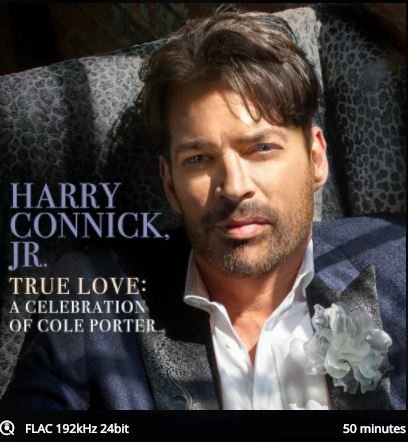
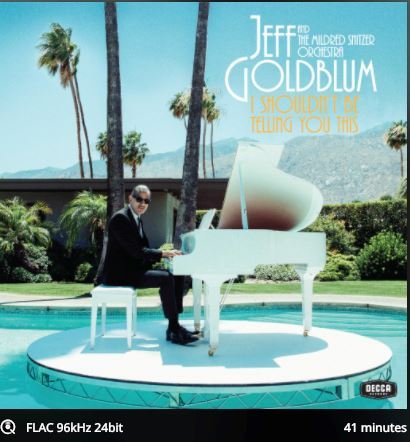
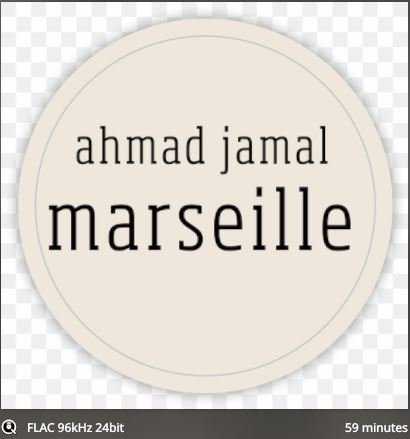
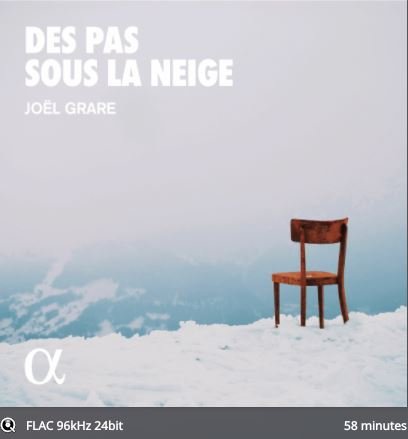
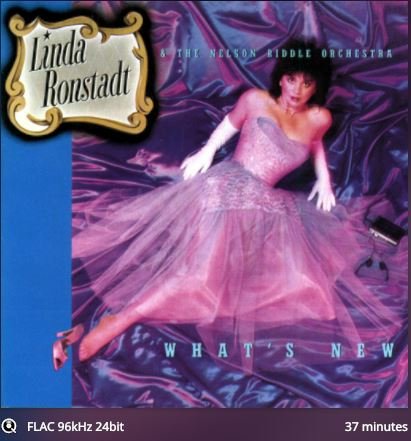
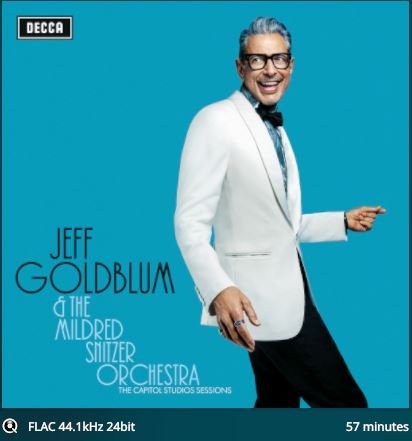
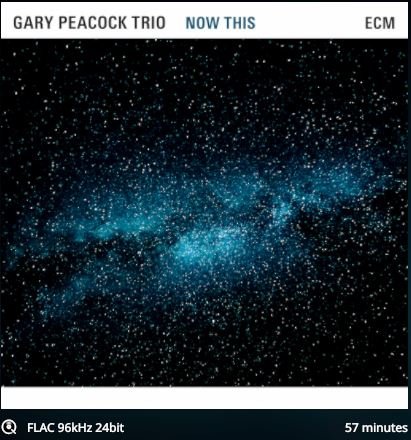
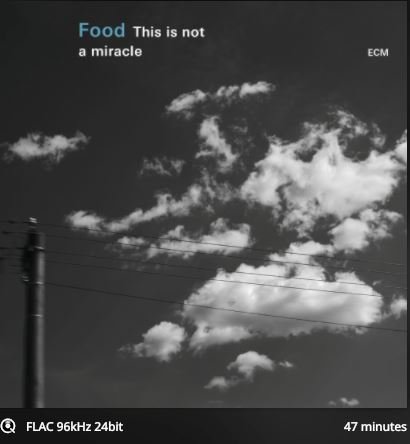
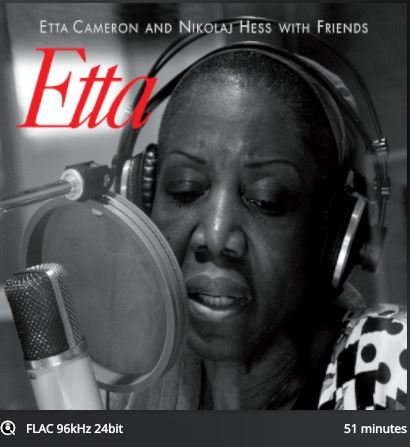
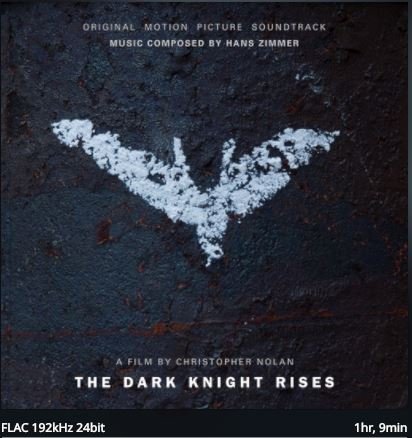
Steve williams
Site Founder, Site Co-Owner, Administrator
Emile
Congrats on liking Jeff Goldblum as he is a gifted pianist. Here in California we see him often on TV as the spokesperson for apartments.com (strange world)
Congrats on liking Jeff Goldblum as he is a gifted pianist. Here in California we see him often on TV as the spokesperson for apartments.com (strange world)
Hi microstrip,
Can you please then share one or 2 of your favourite Decca/DG recordings and what you listen for.
Cheers
G
I have listed a few before, these are some I really like. Decca Shostakovitch 5th or 8th with Haitink - powerful, great tone and imaging, sometimes loud but never noisy. DG Grieg Songs von Otter , Forsberg - extremely clean but very nuanced and realistic. You feel a real piano and a singer in collaboration. DG performances by Hagen Quartet such as string quartet no 12 - perfect tone and integration of the quartet. Harmonia Mundi - Falla pieces with Josep Pons Orquestra De Cambra Teatre Lliure - dramatic, great blending of dynamic voices and orchestral detail.
Just got an Extreme and can i say this is simply the most amazing thing ever as a source. I am enjoying the listening again and exploring so many tracks I have last heard years ago now given a new life. Thanks Emile - you are a true asset to the audiophile world! And i agree the extreme is cheap for what it is.
Just got an Extreme and can i say this is simply the most amazing thing ever as a source. I am enjoying the listening again and exploring so many tracks I have last heard years ago now given a new life. Thanks Emile - you are a true asset to the audiophile world! And i agree the extreme is cheap for what it is.
Welcome to the forum @plasmod3 , I'm happy you are enjoying your new Extreme!
Similar threads
- Replies
- 199
- Views
- 28K
- Replies
- 251
- Views
- 31K
| Steve Williams Site Founder | Site Owner | Administrator | Ron Resnick Site Owner | Administrator | Julian (The Fixer) Website Build | Marketing Managersing |










